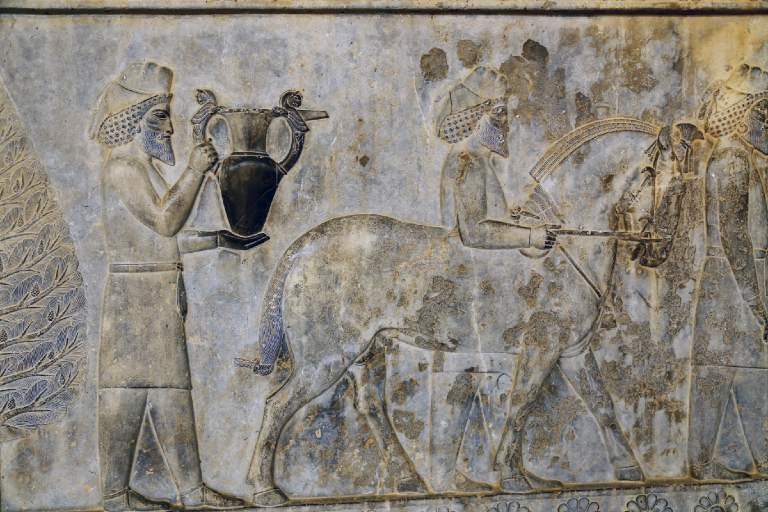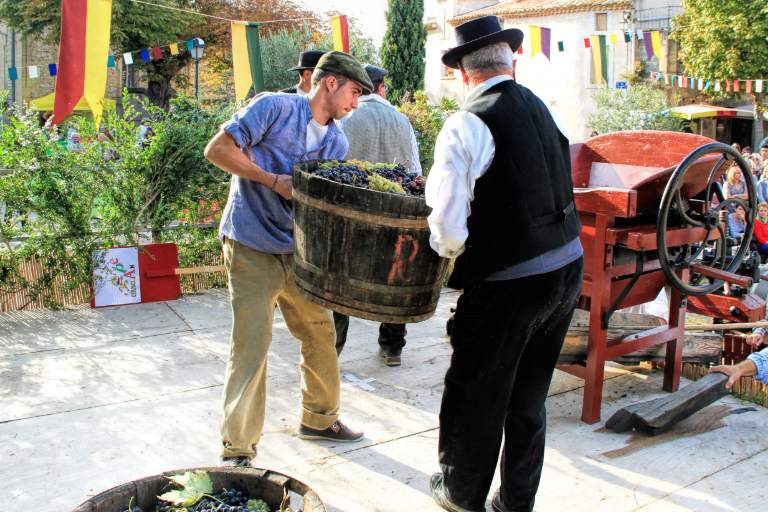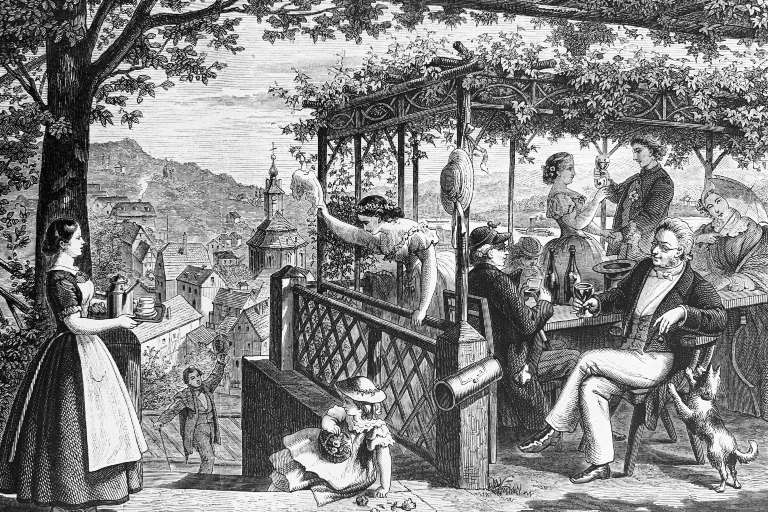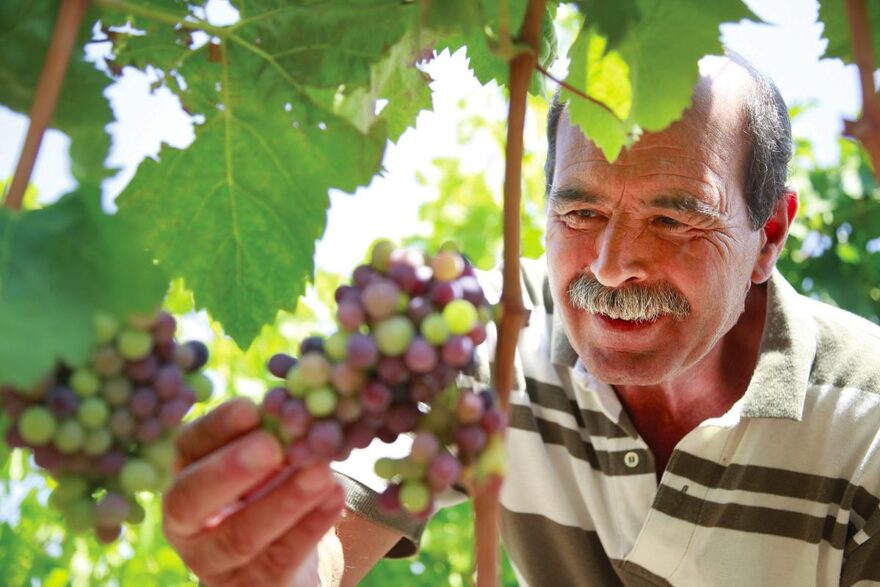History of Wine


Your favorite drink dates back thousands of years
Wine has been a part of life dating back to 7000 B.C. Since then it has helped shape communities and industries throughout the regions where it grows. It has had an important part in trade, war, and cultures.
7000 B.C
The earliest known wines come from the Yellow River Valley in China. Here, tribes fermented honey, rice, and a variety of fruits and stored them in large earthenware vessels (essentially giant clay jars), that were then buried in the ground. Over a couple thousand years, this method spread and is still used in some countries today.
5000 B.C
Archaeologists discovered that wine was made 7,000 years ago in modern day Iran, which at the time was the first permanent settlement in the Middle East.

4000 B.C
Early settlers in today’s Sicily began cultivating grapes early on. Eventually, settlers began making Marsala, the famous fortified wine made from indigenous grapes and unique winemaking practices.
1600-1000 B.C
It is during this time that historians believe wine started to become transported on a regular basis in the ancient Israeli and Greek cultures. Used in trade and to accompany people on their travels, the wine was stored in goatskin sacks.
It was also around this time that texts and drawings were written on tablets about wine and the growing of fruit and grapes used to make the wine.
900 B.C
We are now entering the age where more modern winemaking practices are seen. Civilizations such as those in Northern Europe, who had access to oak, began to use oak barrels to store their wine. We imagine it was from this method that they discovered that the oak seasons, flavors, and slowly oxidizes the wine; a practice we still use today.
1000
During the hundreds of years leading up to this time, winemaking skills and transportation methods began to flourish. Skills and methods were shared all over the world. Around the year 1000, Chateau de Goulaine was built, which is thought to be the oldest operating winery.

1400-1500
European culture discovered the joy of sparkling wine after wines that were being set off for trade went through a secondary fermentation, creating sparkling wine. Also around this time, popular vines that were successful in Europe were transported to South America to cultivate.
1740

The modern glass bottle was designed. While they started using glass bottles a hundred years earlier, the corks kept drying out and they were hard to ship.
1964
Boxed wine was introduced
2010
Cabernet Sauvignon is the world’s most planted red grape, Airen is the world’s most planted white grape.
Evolution of the winemaking process

While wine has been a part of history for thousands of years, it hasn’t always been the same as it has today. The evolution of winemaking and growing grapes throughout the centuries has impacted the ability to successfully grow grapes, harvest grapes, make the wine, and bottle it to be transported. Most of these extreme changes came during the industrial revolution.
Viticulture
Thousands of years ago, growers were only able to grow indigenous vines. Nowadays vines have been transported all over the world and we have even been able to cultivate new clones to create grapes that are able to withstand harsher environments and be less perceptible to diseases and fungus.
While some grafting and pruning practices came about a couple thousand years ago, the methodical process of doing this is a fairly new thing. Once the vines hit dormancy, field workers are then able to prune the vines in order to control how they grow, control how many bunches will grow, and keep the vines healthy.
Some regions near bodies of water had access to medieval irrigation systems, however, they were often not used on vines. It was knowledge even then that most vines grow best when they struggle a bit for water. In fact, too much water can be very damaging. To this day, most regions do not irrigate their vines.
Of course, there were not any pesticides until recently. Thousands of years ago up until about 100 years ago, the areas where vines could successfully grow and make viable grapes year after year was quite limited. With modern technology and pesticides, we are able to expand the number of areas in which vines can grow.
Regions with higher humidity are able to grow grapes because we have sprays that help decrease the chance of fungus and mold issues. We are also able to use pesticides to decrease the chances of having issues with aphids and other critters. Vines are able to grow to an older age and retain their quality throughout those ages.
It is thought that hundreds of years ago, replanting was common practices and vines were often not mature because they would frequently be overcome with aphids and other debilitating diseases, forcing growers to replant vines.
Harvest
One of the winemaking processes that has been fairly consistent over the centuries is the hand-harvesting method. Most old world regions strictly hand pick their grapes to ensure the best quality grapes are picked. Other areas are too steep or the vines are too close together in order to machine harvest.
Sorting, stemming, crushing
Just like hand-picking grapes during harvest, the grapes are still sorted by hand most of the time. Some large production wineries have come to use a machine that was originally for sorting cherries that they now use to sort their grapes.
This machine picks out debris, bad bunches, bugs etc. and leaves behind only viable grape bunches. For those winemaking processes in which you destem the grapes, the process has gone from being entirely done by hand to machine destemming.
The machines have rubber pegs attached to a cylinder shape that rotates and essentially separates the grapes from the stems. This is quite a lengthy process to do by hand.
We have all seen pictures of harvest parties where you can go and crush grapes with your feet. This is what used to be done in order to squeeze the juice out. A few hundred years ago, some regions started making these barrel-shaped crushers that allowed you to crank a lever that then crushed the grapes and the juice came out of the slits in the barrel.
Additives
Additives like sugar, commercial yeast, and fining agents are obviously very recent in comparison to the history of winemaking. Not surprisingly, the use of oak has been around for hundreds of years and was originally used strictly to store wine, until it was discovered that aging wine in oak has many benefits to the flavor.
Grapes and all fruits have indigenous yeasts that start to ferment the juice in the fruit once the skin has been broken. Nowadays, we are able to cultivate special yeasts in labs that help winemakers to control the winemaking process more and produce the yeast byproducts they want. Today, some winemakers still choose to use indigenous yeasts in their wine production.
Sugar additives are a tool that helps winemakers produce consistent wines when the season yields low sugar wines. Sugar has not been a widespread and affordable commodity until very recently. Most old world wine regions actually ban the use of sugar in wines. However, it has helped new world wineries produce consistent wines, especially in regions and climates that yield low sugar grapes.
All additives are fairly recent because chemicals are now controlled and made for commercial purposes.
Filtering
The process of filtering wine is not as new as many people might think. While today we have complex machines that are able to filter the wine at a very fast-pace to any degree you wish, there were many ways winemakers filtered wine hundreds of years ago.
Cheesecloth allowed winemakers to filter out most of the particles and cloudiness that are noticeable in wine. This is also the most common practice of filtering for home winemakers today.
Evolution of the consumption behaviors thru the ages

The consumption of wine from thousands of years ago until the modern day has changed dramatically. From the amount drank, to age of consumption, to customs associated with drinking wine; it is no surprise that wine has been an important part in the culture of society for thousands of years.
While historians are unsure how wine has played a part in society throughout the entire history of wine, it is said to have played a similar role thousands of years ago, as it does today; as a cultural and communal drink.
Symbolism
When wine trade started a couple thousand years ago in areas like Mesopotamia, only the rich and noble peoples were able to afford wine. The consumption of wine was a status symbol for those who could afford it. While today wine is accessible to everyone in most places, it can still prose as a status symbol for the consumption and collection of the world’s finest and rarest wines.
We still see wine as a form of a status symbol in some parts of the world today, particularly China and other Asian countries. Wine consumption here is fairly new, it has become a mark of wealth. Those who can afford it are collectors of some of the finest wines from France and other Old World regions. You will see extensive wine menus at fine restaurants and hotels.
Just like in other countries around the world, as wine consumptions continue to grow and China opens up the importing market for a wider selection of affordable wines. China will soon become the second leading consumer of wine behind the United States.
Fertility
While modern-day technology and winemaking practices make for relatively consistent production of wine, thousands of years ago harvesting crops was a much more volatile practice. The ability to make wine was dependent on a good harvest. Good harvest years were celebrated with the making and consumption of wine and was said to be a good omen of fertility for the upcoming year.
Religion

Wine has been an important part in many religions throughout history, including Greek mythology, Christianity, and Buddhism.
The Greeks used to offer wine to their gods and were used in many rituals. In Christianity, red wine has symbolized the blood of Christ and is still being used in mass and rituals today. The Buddhists were said to place glasses of wine on their altars as a symbol of respect and sacrifice.
The cultural and religious phenomenon regarding wine is quite unreal. Some ceremonies, rituals, and societal practices completely revolve around wine and have been an integral part of countless communities throughout history.
Throughout all this time, the growing of grapes and making of wine has developed into an incredible and ever-changing industry. Once stomped with bare feet and held in goatskin sacks, wine is now commercially grown and harvested and being transported by the cases across the globe.




